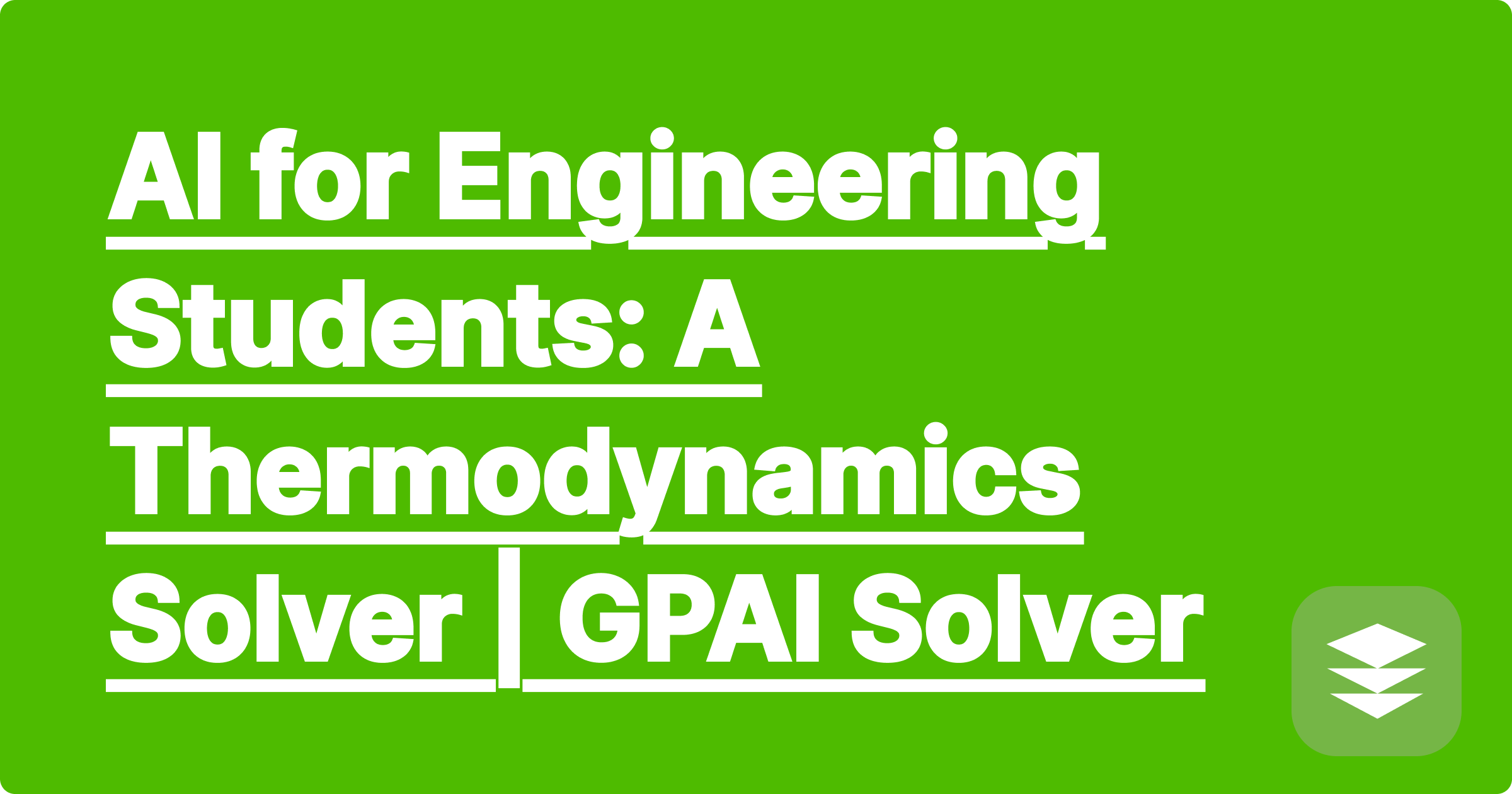
For many engineering students, thermodynamics is a rite of passage. It's a subject where abstract concepts like entropy and enthalpy collide with complex, multi-step calculations. A single problem can require you to pull from tables of material properties, apply the laws of thermodynamics, and perform meticulous unit conversions. It's the kind of homework that a standard calculator simply can't handle.
So, when you're staring at a problem involving a Carnot cycle or an isentropic process at 1 AM, where do you turn? The answer is increasingly found in specialized AI. A sophisticated thermodynamics problem solver can be the ultimate assistant, guiding you through the complex logic and ensuring your calculations are spot-on.
This guide explores how AI for engineering students is revolutionizing the way complex subjects like thermodynamics are studied and mastered.
Solving a thermodynamics problem isn't just about math. It involves a unique blend of:
This is why a generic math solver often fails. It can't grasp the underlying physics or the context-dependent data. You need an AI trained on the principles of engineering.
A dedicated AI tool like GPAI Solver is designed to tackle these specific challenges head-on. It acts not just as a calculator, but as a virtual TA that understands the engineering workflow.
Here’s a practical example of how it would solve a typical First Law of Thermodynamics problem for a closed system:
The Problem: "2 kg of air in a rigid container is heated from 300 K to 500 K. Assuming air is an ideal gas with a constant volume specific heat (Cv) of 0.718 kJ/kg·K, find the heat added to the system."
GPAI Solver's "Step-by-Step" Process:
[Image: A screenshot of the GPAI Solver interface displaying the step-by-step solution to the thermodynamics problem described above. Alt-text: A thermodynamics problem solver AI showing the First Law calculation.]
This isn't just an answer. It's a complete, learnable process that mirrors exactly what a professor wants to see in your work.
FeatureGeneral AI (e.g., ChatGPT)GPAI Solver (Specialized Engineering AI)Data AccuracyCan hallucinate material properties or constants.Utilizes a reliable, verified database for engineering properties.Unit HandlingProne to errors in unit conversion and consistency.Built to handle complex unit conversions (e.g., kJ to BTU) accurately.Solution FormatVerbose and conversational, not ideal for submission.Offers structured "Step-by-Step" and submission-ready "Humanizing" & "Hand-writing" modes.FocusGeneral knowledge.Fine-tuned specifically for university-level STEM and engineering curriculum.
Q1: Can an AI handle problems involving thermodynamic tables (like steam tables)?
A: Yes. A specialized thermodynamics problem solver like GPAI is designed to access and interpolate data from standard thermodynamic tables as part of its solving process, a key feature that general-purpose AIs lack.
Q2: What other engineering subjects can this AI help with?
A: The principles apply to many core engineering subjects, including Dynamics, Statics, Fluid Mechanics, and Circuit Analysis. Any subject that combines mathematical calculation with physical principles is a perfect fit for this type of AI assistant.
Q3: How can I ensure the AI solution is correct?
A: The best approach is to use the AI's "Step-by-Step" solution to check your own work. If the logic and formulas align, you can be confident in the result. The transparency of the process is key to trusting the outcome.
Thermodynamics and other advanced engineering courses are designed to be challenging. But you don't have to tackle them alone. By leveraging the right AI tools, you can break down the most intimidating problems into manageable steps, verify your work, and deepen your understanding of core engineering principles.
Ready to conquer your engineering homework?
[Try GPAI Solver today and experience the most powerful AI for engineering students. Sign up for 100 free credits and see the difference.]
GPAI - The Future of AI-Powered Academic Assistance
GPAI Solver: Redefining Problem-Solving in STEM Education
GPAI Cheatsheet: Your AI-Powered Modular Study Companion
GPAI Notetaker Rethinking Note-Taking for STEM: A Smarter, Context-Driven Approach
How to Get Human-Like Solutions for Your Physics Homework | GPAI Solver
Submit Your Math Homework in AI-Generated Handwriting | GPAI Solver
AI Math Tutor vs. Human Tutor: Which is Better for Calculus? | GPAI Solver
Best AI Homework Helper for College STEM Courses: 2024 Comparison | GPAI Solver
How to Check Your Math Work for Errors with an AI | GPAI Solver
AI for Engineering Students: A Thermodynamics Problem Solver | GPAI Solver